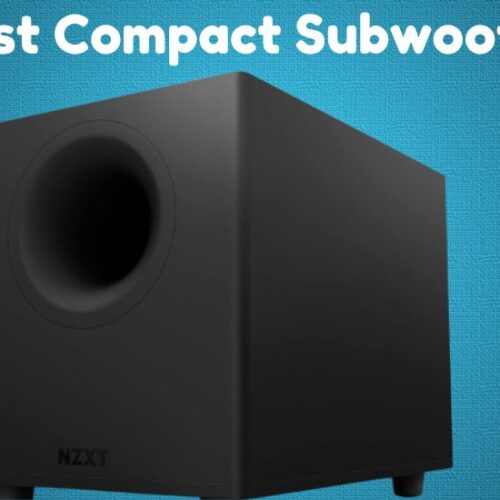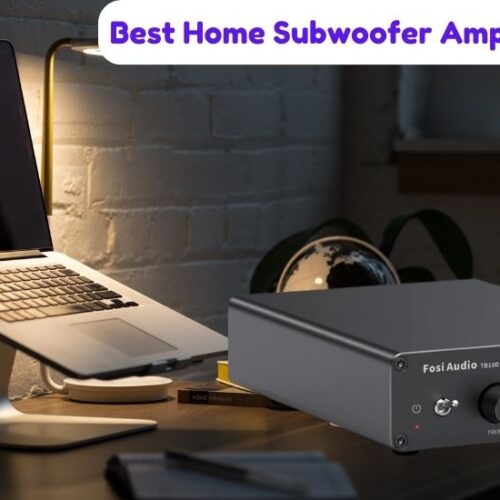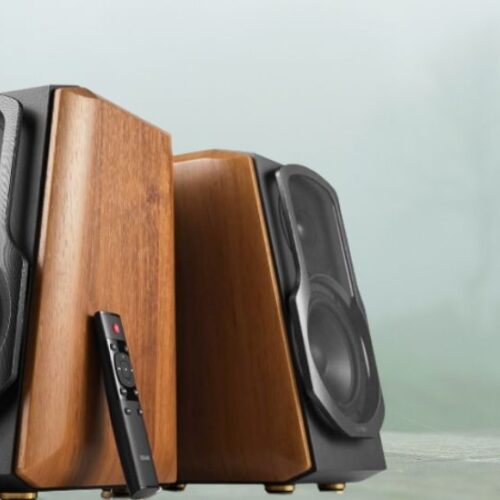Speaker drivers are the individual components within a speaker that produce sound. These drivers typically consist of a cone, voice coil, magnet, and spider. Regarding speaker size, the most common driver sizes are 6.5 inches and 8 inches. It is important to measure the diameter of the speaker cone to determine the size of the driver. Speaker measurements can also include the speaker’s impedance, which measures how much the speaker resists the flow of electrical current from the amplifier.
If you want to replace a speaker in your stereo or speaker cabinet, you will need to measure the speaker’s diameter and the cutout size. You can do it with a tape measure or multimeter. By accurately measuring your speaker, you can ensure the new speaker is compatible and fits properly in the mounting hole.
How to measure a speaker and determine the correct size replacement speaker?
To measure a speaker and determine the correct size replacement speaker, you must remove the speaker from its mounting location. You can do it by disconnecting the speaker wires at the back of the speaker. Once the speaker is removed, you can measure the cone’s diameter at its widest point. This measurement will determine the driver size that you will need to purchase. Additionally, it is important to check the speaker’s impedance to ensure that it matches the amplifier’s specifications. Accurately measuring your speaker is crucial to avoid purchasing the wrong size speaker and experiencing compatibility issues with your audio system.
Which Tools are needed To measure speaker driver?
When measuring speaker drivers, it is important to have the right tools and equipment on hand.
measurement microphone
One essential tool is a measurement microphone, which captures the speaker driver’s sound output. This microphone is essential for accurately measuring the frequency response and performance of the speaker.
audio interface
An audio interface is also necessary to connect the measurement microphone to a computer. The audio interface bridges the microphone and the computer, allowing for audio data transfer.
computer with measurement software
Finally, a computer with measurement software is crucial for analyzing the data collected by the microphone. The software provides detailed information about the speaker driver’s performance, including cone diameter, area, and impedance.
key factors To measure speaker driver
When measuring a speaker driver, it is important to consider several key factors. The cone diameter, or the width of the speaker driver’s cone, is a crucial measurement to take. This measurement helps determine the overall size and performance of the driver. The height of the speaker, as well as the diameter of the frame and the cutout diameter, are also important measurements to consider. Additionally, the depth of the speaker cabinet and the depth of the speaker itself play a role in the driver’s overall performance. By measuring these factors accurately, you can ensure that your speaker driver works optimally.
International copyright laws and guidelines
When measure a speaker driver, following international copyright laws and guidelines is important. This includes ensuring that you have the proper permissions to measure and analyze the speaker driver. It is also important to note that some speaker drivers may restrict how they can be measured and analyzed. By following these guidelines, you can avoid any potential legal issues and ensure a better experience when measuring speaker drivers.
speaker’s impedance and frequency response
When measuring a subwoofer or woofer driver, it is important to consider the speaker’s impedance and frequency response. The impedance of the speaker driver can affect its overall performance and sound quality. Additionally, the frequency response, measured in Hz, can help determine the speaker’s ability to reproduce low frequencies. By measuring the diameter from one end of the cone to the other, as well as the depth around the cone, you can accurately assess the performance of the speaker driver. These measurements can help you determine the best enclosure and setup for your speaker driver, ensuring optimal performance and sound quality.
How do you set up the measurement equipment?
Placing the measurement microphone
When setting up measurement equipment for analyzing speaker systems, the first step is to place the measurement microphone in the correct position. The microphone should be positioned in front of the speaker at ear level, approximately 1 meter away from the speaker. This placement is crucial for accurate measurements and ensuring that the data collected is reliable and consistent.
Connecting the microphone to the audio interface
Once the measurement microphone is in place, the next step is to connect it to the audio interface using the appropriate cables. It is important to ensure the connections are secure and the microphone is properly calibrated to the audio interface. This will ensure that the measurements taken are accurate and minimise potential errors.
Setting up the measurement software
After connecting the microphone to the audio interface, the final step is to set up the measurement software for analyzing the data collected. This software will allow you to visualize and interpret the measurements taken from the speaker systems, giving you valuable insights into the speaker design and performance. Make sure to follow the instructions provided with the software and calibrate it according to the specific requirements of your measurement setup for the best results.
What is Conducting a frequency response measurement?
A frequency response measurement is essential in evaluating a loudspeaker’s performance. Whether you are testing a single loudspeaker driver or a complete speaker system, understanding the frequency response can help you optimize your audio setup for the best possible sound quality. Before you begin the measurement process, ensure that your javascript is enabled on your device to run the necessary measurement software smoothly. Additionally, ensure you have access to the part of the driver you want to test and the speaker impedance information to accurately interpret the results. To start the measurement process, you will need to measure the width and depth of your speaker cabinet to provide more context to the results.
Playing a frequency sweep through the speaker
Playing a frequency sweep through the loudspeaker is the next step in the measurement process. This involves sending a signal that gradually increases or decreases in frequency through the speaker system. By playing a sweep, you can measure how the speaker responds at different frequencies and identify any potential issues with the audio output. Recording the response with the measurement software is crucial for capturing accurate data. This step involves using the software to capture the speaker’s output and create a visual representation of the frequency response graph. Ensure that you capture the response at various volume levels to comprehensively understand the speaker’s performance.
Recording the response with the measurement software
Once you have recorded the response, the final step is to analyze the frequency response graph. This involves examining the graph to identify any peaks, dips, or irregularities in the speaker’s output at different frequencies. By analyzing the graph, you can determine the overall sound quality of the speaker and make adjustments to optimize its performance. Look for any patterns in the graph that may indicate resonances or frequency response anomalies that could impact the audio quality. Make notes of any areas needing improvement and consider experimenting with different settings or configurations to achieve the desired sound output.
Analyzing the frequency response graph
Conducting a frequency response measurement may seem daunting at first, but with the right tools and knowledge, you can accurately evaluate the performance of your loudspeaker. By following these steps and paying attention to the details of the frequency response graph, you can make informed decisions to enhance your audio setup and enjoy high-quality sound from your speaker system.
What is Conducting a distortion measurement?
Conducting a distortion measurement involves several steps to ensure accurate results.
Playing a distortion signal through the speaker
Firstly, you need to play a distortion signal through the speaker to generate the necessary output for measurement. You can connect your audio device to the speaker and play a known distortion signal. Ensure that the speaker is functioning properly and that there are no issues with the audio source. It’s important to use a distortion signal suitable for the speaker type being tested, as different types of speakers may respond differently to various frequencies and levels of distortion.
Recording the output with the measurement software
Once the distortion signal passes through the speaker, the next step is recording the output using measurement software. This software will capture the signal as it is produced by the speaker and provide data on the levels of distortion present. Make sure to calibrate the software correctly and follow the manufacturer’s instructions for accurate results. Remember that the recording equipment’s quality can also impact the results, so using high-quality recording devices for precise measurements is important.
Analyzing the distortion levels
After recording the output, the final step is to analyze the distortion levels to determine the speaker’s performance. This involves reviewing the data collected by the measurement software and comparing it to standard distortion levels for the type of speaker being tested. You can determine whether the speaker functions properly by analysing the distortion levels. This information can help you make informed decisions about the speaker, such as whether it needs to be repaired or replaced.
Comparing measurements to manufacturer specifications
When it comes to installing new speakers in your car stereo system, it’s important to ensure that the measurements of the speakers match the manufacturer’s specifications. Many driver manufacturers provide detailed specifications for their products, including the outer diameter of the speaker, the hole that the speaker needs to fit in, and the mounting holes for the screws. Before replacing any speakers, you’ll need to measure the widest part of the cone to ensure it will fit correctly in the baffle.
One of the first steps to measure the speaker driver correctly is to pull the speaker out of the baffle and measure from one edge of the cone to the other. Make sure to use the correct units of measurement, usually in inches, to ensure the measurements are accurate. If you have multiple speakers that you want to replace, it’s important to measure each one individually to ensure they all fit properly in their respective holes. You’ll also need to measure the distance between the mounting holes to ensure they align with the holes in the baffle.
Understanding how to interpret the measurements
Once you have all the measurements of the speakers, it’s important to understand how to interpret them and compare them to the manufacturer’s specifications. Check if the drivers meet the specified frequency response, distortion, and time domain requirements to ensure they will provide the best sound quality for your car stereo system. It’s also important to ensure that the speakers will fit correctly in the baffle and that the mounting holes align properly with the holes in the baffle.
Checking if the drivers meet the specified frequency response & distortion requirements
Before installing the new speakers, checking if they meet the specified frequency response, distortion, and time domain requirements is important. This will ensure that the speakers provide the best sound quality possible and work seamlessly with your car stereo system. If the measurements of the speakers do not match the manufacturer’s specifications, you may need to consider looking for different speakers that meet the requirements of your system.
Conclusion
Measuring speaker drivers involves calculating the driver’s diameter and the type of material used to construct it. This information determines the driver’s power handling capabilities and frequency response. Accurately measure speaker driver is essential for achieving optimal sound quality and performance. Understanding the specifications of each driver allows for proper matching with amplifiers and crossover networks, resulting in a well-balanced audio system. Learning about speaker drivers is a valuable first step for beginners just starting out in the world of audio technology. By gaining knowledge in this area, you can enhance your listening experience and potentially even embark on a career in audio engineering.









